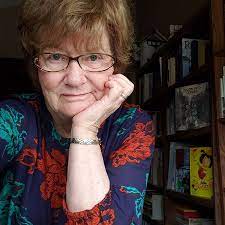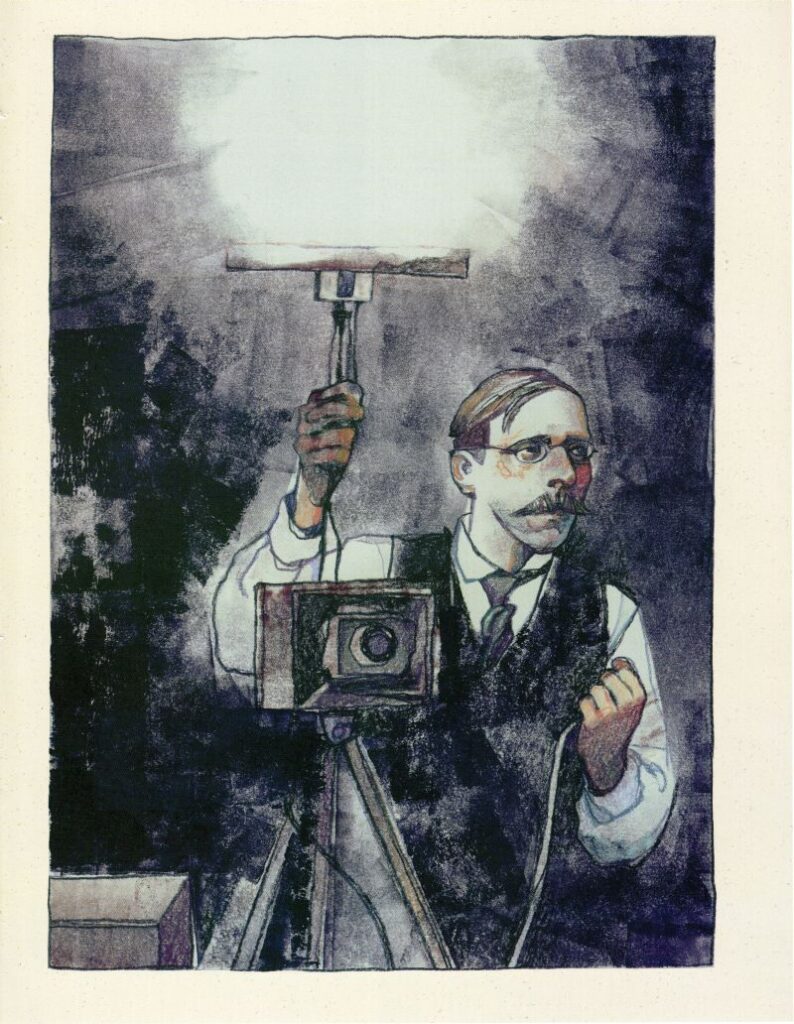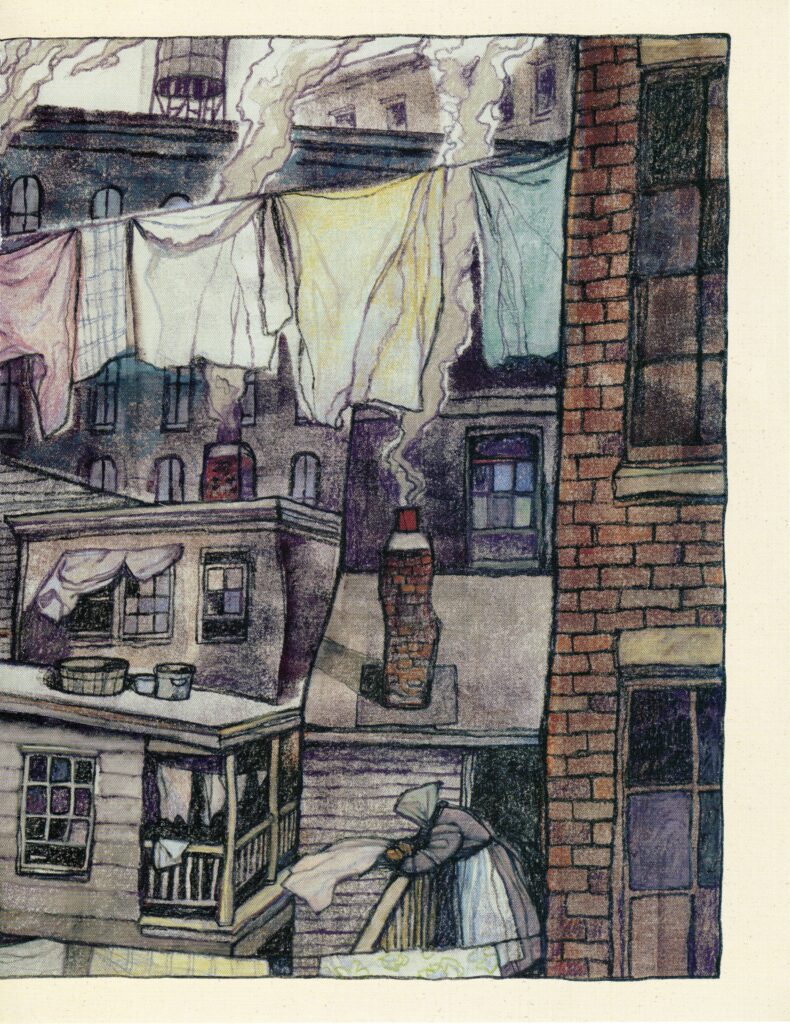It is an absolute delight for me to welcome my friend, Alexis O’Neill. In her book, JACOB RIIS’S CAMERA, Alexis shares the work of Riis as a photojournalist and reformer. His photographs of the Lower East Side were a catalyst for social change. Having done research about the Jewish community in New York, I was familiar with Jacob Riis’s photos. They capture the emotional essence of people, real people, who faced hardships beyond the imagination. These images continue to educate and inform us about the lives of immigrants and the history of those who came before us.
Beautifully illustrated by Gary Kelly, JACOB RIIS’S CAMERA tells the “story behind the story.” Who was Jacob Riis? What motivated him to do this important work? JACOB RIIS’S CAMERA is an important book for libraries, schools, and home collections.
As a journalist, Jacob Riis told stories with his photos. What drew you to write about him?
Photojournalists are like picture book writers for adults. They marry words and images together for emotional impact. When Riis combined photos with his text, he was able to move people to make changes in the tenements in 19th century New York where his words alone hadn’t. As someone who used to live with a camera in my hands, I loved the way his photos touched me long before I knew anything about the man. But what convinced me to write about him was his autobiography, The Making of An American, a compelling, intimate, conversational account of his life. I wanted readers to know about what drove Riis in the service of social reform and his desire to make life better for children.

Jacob Riis’s book, HOW THE OTHER HALF LIVES, had a big impact on social reform. What do you think made his photos so compelling?
Two big reasons made Jacob Riis’s photos compelling. First, he offered the general public shocking first-hand proof of the terrible living conditions in the tenements at the time. Through these images, people could see why reform was necessary. Second, he was able to illuminate people in a way that made it possible for readers to identify with his subjects, especially when he focused on children.
New York’s Lower East Side holds an emotional connection for many Americans whose families immigrated to New York from their homelands. Do you feel a personal connection to the stories Jacob Riis told through his photographs?
My own grandparents were immigrants – one couple from Cork, Ireland, the other from Nova Scotia, Canada – who lived in the Boston area where triple-decker housing dominated neighborhoods. The apartments housed ever-changing numbers of cousins and extended family members as they found jobs and, eventually, moved into their own living spaces. So I feel a kinship with those who go through hard times trying to find a better life in a new country.
What do you hope younger readers come away with after they read Jacob Riis’s Camera?
Jacob Riis’s interest in helping impoverished people with substandard housing conditions began when he was twelve in Ribe, Denmark. I hope readers see that the interests they have when they are young are worth pursuing as they get older. I hope readers see that Riis’s lifelong concern about the poor sustained him through his long, persistent crusade as an adult to reform housing in New York City. I also hope that they recognize how cameras and photographs can play an important role as tools of social change.
What surprised you most about Jacob Riis?
Although Riis is considered by to be the father of photojournalism, I was surprised to find that Riis didn’t consider himself a photographer. “I had use for it,” he wrote, “but beyond that I never went. . . I am no good at all as a photographer.” In fact, Riis was very careful to preserve his writings, but was so casual about his slides, prints and negatives that they were almost lost when his house faced a wrecking ball. Alexander Alland, Sr., whose photographs a critic once compared to Riis’s, managed to find and save them before they were destroyed.



Jacob Riis’s Camera: Bringing Light to Tenement Children
by Alexis O’Neill, illustrated by Gary Kelley
Calkins Creek/Boyds Mills & Kane 2020
ALEXIS O’NEILL, Ph.D. is the author of fiction and nonfiction pictures books including Loud Emily (Simon & Schuster) The Recess Queen (Scholastic Press); Estela’s Swap (Lee & Low); The Kite That Bridged Two Nations: Homan Walsh and the First Niagara Suspension Bridge (Calkins Creek); Jacob Riis’s Camera: Bringing Light to Tenement Children (Calkins Creek); and The Efficient, Inventive (Often Annoying) Melvil Dewey (Calkins Creek). Alexis is the recipient of the California Reading Association’s Dr. Marcus Foster Memorial Award for making significant and outstanding contributions to reading throughout California and is an instructor for the UCLA Extension Writers’ Program. www.alexisoneill.com
1 thought on “Interview with Alexis O’Neill, author of JACOB RIIS’S CAMERA”
Comments are closed.